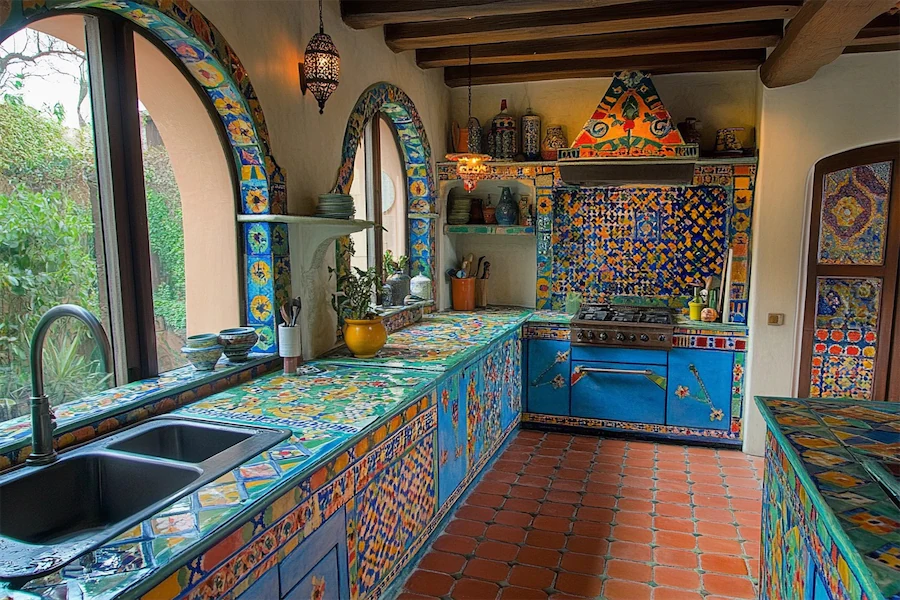A Moroccan kitchen embodies the rich cultural heritage of Morocco, characterized by vibrant colors, intricate patterns, and a harmonious blend of traditional and modern elements. This article explores the key features, applications, and considerations when designing a Moroccan-inspired kitchen.
Introduction to Moroccan Kitchens
Moroccan kitchens are renowned for their warm and inviting atmosphere, often featuring open floor plans that seamlessly connect to other living areas or courtyards. This design fosters a sense of community and reflects the Moroccan emphasis on hospitality.
Key Features of Moroccan Kitchens
- Vibrant Color Palette: Moroccan kitchens typically showcase bold colors such as deep reds, blues, and golds, creating a lively and exotic ambiance.
- Intricate Tilework: The use of zellige tiles—handcrafted, glazed terracotta tiles arranged in geometric patterns—is a hallmark of Moroccan design, adding texture and visual interest to walls, backsplashes, and countertops.
- Arched Doorways and Niches: Incorporating arches and alcoves adds architectural interest and reflects traditional Moroccan architecture.
- Natural Materials: Utilizing materials like stone, clay, and wood creates a connection with nature and enhances the kitchen’s earthy appeal.
- Decorative Lighting: Ornate lanterns and pendant lights with intricate metalwork cast patterned shadows, contributing to a warm and inviting atmosphere.
Applications of Moroccan Kitchens
- Residential Homes: Incorporating Moroccan design elements can transform a standard kitchen into a vibrant and culturally rich space, enhancing the overall aesthetic appeal.
- Restaurants and Cafés: Moroccan-themed eateries can create an immersive dining experience by featuring traditional design elements, thereby attracting patrons seeking an exotic ambiance.
- Cultural Centers: Showcasing Moroccan kitchen designs in cultural exhibits can educate visitors about Moroccan heritage and architectural traditions.
Considerations When Designing a Moroccan Kitchen
- Cultural Authenticity: Incorporate genuine Moroccan design elements to honor the culture’s rich heritage, ensuring the space reflects traditional aesthetics.
- Functional Layout: While emphasizing decorative aspects, maintain a practical kitchen layout that supports efficient workflow and modern appliances.
- Material Selection: Choose durable and authentic materials, such as natural stone and handcrafted tiles, to achieve an authentic Moroccan feel.
- Lighting: Incorporate both natural and artificial lighting to highlight architectural features and create a warm, inviting atmosphere.
Conclusion
A Moroccan kitchen offers a unique blend of vibrant colors, intricate patterns, and traditional architectural elements, creating a space that is both functional and aesthetically pleasing. By thoughtfully integrating these features, one can design a kitchen that reflects the rich cultural heritage of Morocco.
